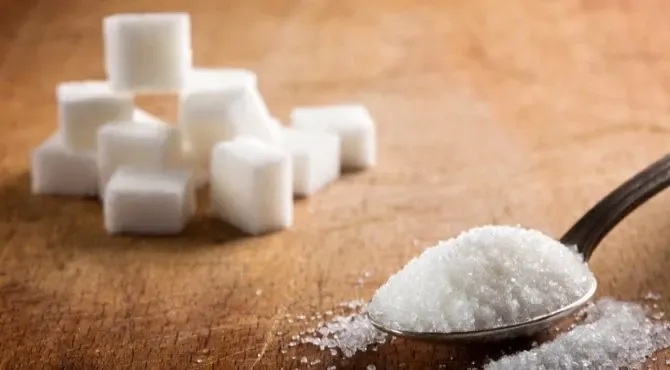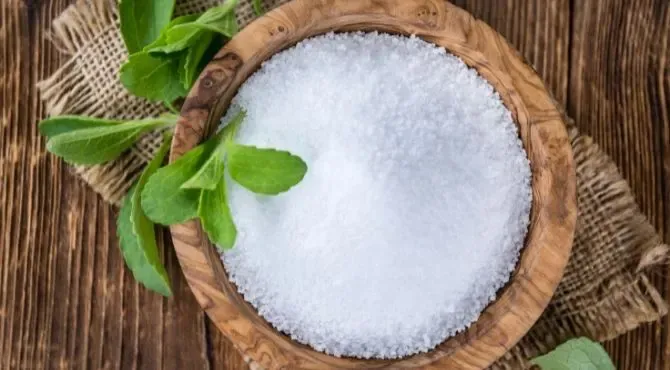What can I substitute for white sugar?

The Best white Sugar Substitutes
However, these substitutes should not be abused and consumed reasonably because they remain mainly composed of sugars. Here are five alternatives to replace white sugar and customize your recipes. See you after the list to learn all about sugar, the glycemic index and the risks associated with its excessive consumption.1. Stevia

Stevia is a plant cousin of chicory that comes from South America. Its leaves contain natural sweeteners. Its glycemic index is zero, and it does not cause post-meal blood sugar spikes. In addition, its sweetening power can be 300 times greater than sucrose. It is therefore recommended to replace sugar.
How to consume it: Stevia is usually found in powder form, and it can be used in many preparations: muffins, pastries, dessert creams, desserts etc. Its flavour is slightly aniseed. There is also stevia in the form of leaves, and their infusion can be used to sweeten a fruit salad, for example.
2. Maple syrup

How to consume it: its flavour can take on vanilla or herbaceous notes depending on its quality. In addition to drizzling pancakes and crepes, this syrup can be used to make pies, upside-down cakes, and cereal bars in savoury dishes such as a vegetable wok or to deglaze meat cooking juices.
3. Birch sugar

Ideal for replacing white sugar, birch sugar, also called xylitol, is a compound from birch bark that is very popular in Nordic countries. Its sweetness and flavour are comparable to table sugar's, and a feeling of freshness accompanies its tasting. It does not contain fructose and is 2 times less caloric than sucrose.
How to consume it: xylitol extracted from birch is found in most organic stores. It can be used to sweeten drinks, teas, infusions, chai lattes or in recipes for jam, pancakes and other desserts.
4. Agave syrup

The agave is a plant grown mainly in Central and South America. Agave syrup comes from the juice taken from the heart of the plant. Its glycemic index is low (15). It may be attractive on medical advice for people with diabetes. The fructose it contains gives it a good sweetening power.
How to consume it: prefer 100% agave, organic and unrefined syrups. Agave syrup has a neutral flavour. It can be used to sweeten dairy products, yogurts, and milk kefir. But also in recipes for pastries and puddings.
5. Honey

Humanity has been consuming honey for millennia for its many virtues. It is produced from the nectar of flowers that bees collect. The most qualitative honey has an antioxidant action. Its sugar content is slightly lower than white sugar, and it has a higher sweetening power and a lower glycemic index. A very healthy alternative to replace sugar!
How to consume it: choose 100% pure honey without added syrup. There is honey with sweet or powerful flavours with a liquid or crystallized texture. There are many varieties of honey, fir honey, and acacia honey. It can be used in gingerbread, madeleines, on a Fromage blanc or a pana cotta.
What is sugar?
Sugar is one of the carbohydrates. These are macronutrients like fats and proteins. They perform several essential functions. For example, they provide energy to the muscles and the brain. They make it possible to form glycogen reserves stored in the liver and the muscles, which will be transformed into glucose if necessary.White sugar or granulated sugar is mainly composed of sucrose, and it is a type of sugar made up of two simple carbohydrates, fructose and glucose. Fructose is found in fruits, for example, in honey or agave syrup, and it has a higher sweetening power than glucose.
The type of white sugar most consumed in France comes from sugar beets, and it is not purple like the one eaten in salads, but white! Cut the beetroots into pieces before mixing them with water. The mixture is then heated to evaporate the water and allow crystallization.
White sugar is also produced from refined cane sugar. After crushing the sugar cane, the juice obtained is boiled to remove the water and obtain a concentrated syrup. When cane sugar is refined, that is to say, stripped of some of its components, such as colour pigments, its brown colour lightens.
A quick reminder about the glycemic index
Nutritionists previously classified sugars into two categories: slow sugars and fast sugars. Simple sugars such as sucrose or fruit fructose were classified as fast sugars. Complex sugars such as potato starch belonged to the category of slow sugars.This theory is now considered obsolete. Since the type of carbohydrate does not influence its absorption rate or the glycemic peak. Milk, for example, is a source of simple carbohydrates (lactose), but its GI is low. At the same time, potatoes which contain starch ( complex carbohydrate ), have a high GI.
The glycemic index is now used as a criterion for classifying carbohydrates. GI is the ability of food to raise blood sugar, and it is compared to the power of glucose which is 100. When high, it causes blood sugar levels to rise. White bread and rice have a high glycemic index.
Overconsumption of sugar, what are the risks?
ANSES recommends limiting sugar consumption (sucrose, fructose, etc.) to 100 g per day, excluding lactose and galactose, the sugars found in dairy products. It also recommends a maximum of one sugary drink per day (preferably a fruit juice), and almost ⅓ of French people exceed this recommendation threshold.Sugar is an empty calorie because it contains only carbohydrates and no nutrients and minerals.
It is found unexpectedly in many foods. Learning to read labels is essential to monitor your consumption, especially when you have pathologies such as diabetes. Added sugars can be found in industrially prepared dishes, for example, cold cuts and sandwich bread.
5 Sweet Sugar Substitutes for Baking
The WHO has defined the concept of free sugars. These are the glucose, maltose or fructose "added to foods and beverages by the manufacturer, cook or consumer, and the sugars naturally present in honey, syrups, fruit juices and fruit juices concentrate base."She considers that the increase in this type of sugar consumption jeopardizes the nutritional balance. The risk of obesity increases, as does the risk of developing an NCD, a "non-communicable disease." NCDs include heart disease, stroke, diabetes and cancer. Excess sugar is also one of the causes of dental caries, and this is why we recommend replacing sugar.
Read More:
Post a Comment